Visits: 191
最近喝了五瓶比較舊的意大利酒,讓我對「傳統與新派」的論爭有了新的認識。
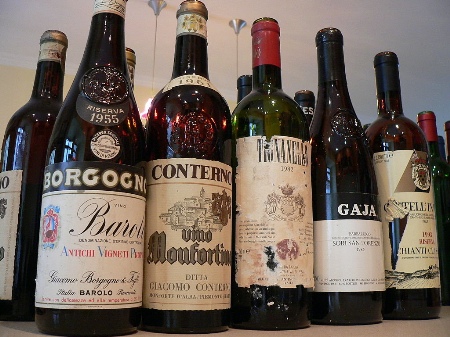

我們同一個晚上喝了 1955 Borgogno Barolo Riserva 和1982 Tignanello。
Borgogno 有一點發霉的氣味,但那幽幽的玫瑰花瓣香氣與純之又純、深之又深的果味令我們驚訝。超過半個世紀的故事依然動人。
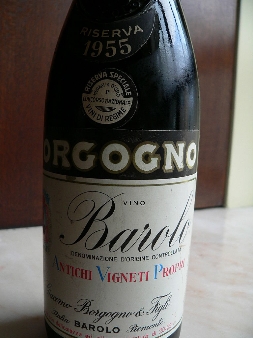
Tignanello 卻令人失望。我不能肯定是木桶味過多還是果味不夠。可能兩者並存正是問題所在。我記得一個月前的 1997 給我們完全不同的印象﹕那是一種粗豪的風格,雄渾的 Cabernet Sauvignon 為陰柔的 Sangiovese 加添了幾分野性。那次我在想的是Cabernet Sauvignon 是否太霸道的問題,而不是木桶味是否過多。我的猜想是﹕1997年是較好的年份,果味蓋過了木桶味;1982則反過來。
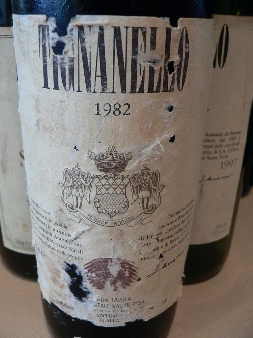
Borgogno 卻沒有這問題,因為傳統的釀酒法是用老的大木桶,味道是中性的。但問題是霉味。

1993年 Castell’in Villa 的 Chianti Riserva 則完全沒有Tignanello 的木桶味問題,果味充盈,活力十足,中年的傳統大木桶製作是少有令人失望的。
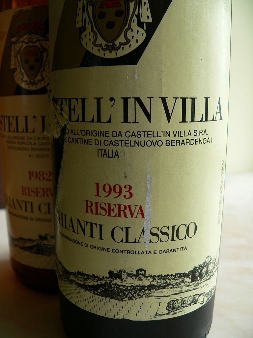

Borgogno 很精彩,但另一個傳統巨匠卻嚇我們一大驚。Giacomo Conterno 是傳統派的天皇,這瓶 1961 Monfortino 評價甚高,但我們這瓶卻變壞了,像 chalk 粉混水一樣的玩意。Monfortino 一般放在舊的大木桶起碼陳年8年才入瓶,有時候更長達10年!在以前的衛生條件下,酒被微菌侵入的機會相對提高,所以老的 Monfortino 品質是最沒有保障的。
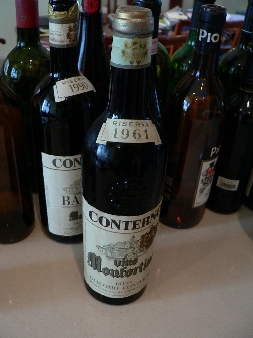
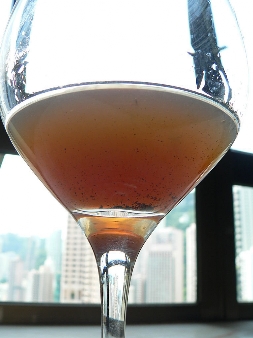
Sheldon Wasserman 在Italy’s Noble Red Wines 裏就曾經這麼說過﹕
Like some of the other Barolos that are given long cask aging, Conterno’s wines seem to be more susceptible to damage by improper handling or storage. While we’ve had many magnificent Barolos from Giovanni Conterno, we’ve had some that didn’t measure up, which were in fact disappointments. We are convinced, however, that the problem occurred after the wines left the winery.
我學到的是﹕用傳統釀酒法做的老酒,是高風險、高回報的遊戲。踫到霉味是家常便飯,像這瓶1961 Monfortino 則是極端的例子。但遇上保存好的酒,卻能讓你欲仙欲死!

1985 的Gaja San Lorenzo 則完全沒有傳統酒的毛病﹕沒有霉味,而且有很新鮮的感覺。 Gaja 的新木桶技術,可能是意大利最高超的。據說他 1969 年開始實驗,到1979年才全面使用新法。但他仍然是謹慎而行﹕在兩年的木桶陳年期裏,他開始的時候只有6到9個月用小木桶,到最後才決定是一年小木桶,又加一年大木桶。而且他只用自己調校過的法國橡木,讓木桶更適合 Nebbiolo 的特性。
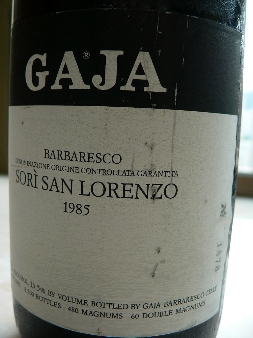
其他新派的 Piedmont 大師,逐漸也走上 Gaja 的 hybrid 道路﹕Scavino 從1993年開始全面用小木桶,但1999年轉到 Gaja 的方法;Clerico 從1990年開始用小木桶,但2005年開始把新的小木桶比例降到 35-40%。今天仍然堅持用新小木桶的新派大師可能只有 Elio Altare 與 Roberto Voerzio。

我初步得出的結論是﹕
用小木桶陳年的 Nebbiolo 與 Sangiovese ,要選年份好的,否則你可能要在鋸木工場裏喝酒!當然最好選出色的化妝師如 Gaja。
用大木桶陳年的Nebbiolo 與 Sangiovese ,要有輸的心理準備。但輸得起,才會贏得大!

傳統好還是現代好?
似乎還是沒有黑白分明的答案!
在義大利見到 wine shops 的 Gaja, Barolo etc 全部放在沒有空調的櫃內, 室外 33度高温, 難怪!
[版主回覆08/10/2009 11:47:00]No risk, no gain!
Don't you think the tignanello tastes like a very average bordeaux wine, wood + fruit and no spice? I have only tried a bottle of 98.
[版主回覆08/10/2009 10:09:00]My experience of Tig has been generally positive. I have had quite a few vintages before, and only 1982 is sub-par, but even then it never reminds me of a Bordeaux.
I believe the key to Tig's performance is how well the very delicate Sangiovese performs in a particular vintage vs the burly Cab Sauv. Although Sang is the dominant varietal (80% before 2001, and 85% from 2001 on), it is a very delicate late-ripening varietal, and in a weak vintage for Sang (which may be a good vintage for CabS), the Sang fruit is easily overwhelmed by CS. 1998 may be just that vintage.
You would therefore do well to pick a good vintage for Sang. I've had '97, '99, '00 and '01 before, and all are beautiful. Even '03 is a very aromatic, sexy wine.
It's very difficult to pair Sang up with a heavy hitting varietal like CS (the same is true about Nebbiolo). Interestingly, Solaia, the mirror image of Tig, with 75% CS, 5% CF, 20% Sang, has always had a more consistent performance, as the Sang is playing a very subordinate role. Now, that is too Bordeaux for me!
時代不停在變,‵顧客′的口味也不停在變。曾幾何時,人們喜歡重口的木桶味,釀酒者為迎合 “大眾”潮流,用各種形式為其佳釀加重木感;現在又反樸歸真,要求原汁原味。所以傳統與現代到底那個好 … 實難有一個明確的答案!
[版主回覆08/11/2009 09:47:00]所言極是。意大利有名的酒評人 Franco Ziliani 最近參觀了 Alba Wine Exhibition 後有如下分析報道﹕
A more mature and informed use of barriques was clearly evident. The barrels used were perhaps not always new (the economic crisis has also slowed the purchase of new barrels), and often third- and fourth-passage casks. The selection of wood seemed to have been toasted in a more relaxed fashion and even producers whom you would have thought lifetime modernists have embraced the healthy and increasingly popular habit of using larger casks, including tonneau and especially botti that can hold between 15 and 30 hectoliters (made from Slavonian and French oak). This is due to the fact that there is a growing number of consumers who prefer wines that smell like Nebbiolo and not like the forests of the Massif Central. A growing number of wines showed more balance, drinkability, and a marked Nebbiolesque character that you wouldn’t have found in the past, even if you looked with a microscope.
Even though the differences between true traditionalists and the equally steadfast believers in innovation remain, the divide has begun to shrink and the differences have begun to mellow slightly. This state of things reveals that producers have begun to pay heed to the elements that should have always played a starring role in their wines: the land, the terroir, the vineyard with all of its “attributes,” not to mention careful vineyard management, elements that make all the différence .
但問題是﹕這些「折衷」口味主要影響新酒。要喝舊酒,則還要在傳統與現代之間游走一段時間,仍然是要面對我這裏提出的問題。但歷史往往是一步一步走出來的,你我都是見證者。
Thanks for the most enlightening sharing!
[版主回覆08/11/2009 09:48:00]You are always most welcome!
的確係好問題! 越老的意大利酒就越兇險= 越好飲 For the Tig, i am quite agree with Teahorse, I tried some of 9x Vintages , and some of them is down sloping already, and for me it is very very close to Brodeaux style ……
[版主回覆08/11/2009 13:37:00]Very interesting view. Did you also try Solaia?
yes Solaia, always give me the feeling of over power when young, even aging still very strong…
[版主回覆08/11/2009 16:07:00]If you look for power, Solaia is the right choice as it is mainly CabSau. The Sangiovese based Tig tends to give more finesse than raw power.
yes you are right, but for italian wine, i think i am not looking for those full power as cab do, i tried a btl of 82 Borgogno Barolo last few month, that's what a italian wine should be, power but rounded with balance acidity and fruit, not only spicy + friut
[版主回覆08/11/2009 21:04:00]Wonderful! You are a Barolo fan as I am!
I Like this bit, ' 當然最好選出色的化妝師如 Gaja 。'.
[版主回覆08/14/2009 11:41:00]I don't want to sound disrespectful, though.
No, no at all. A little make-up to me is a kind of respect. I like lady friends making up a little for apropiate ocassions. Not sure if Angelo Gaja is good at that too? When I was in his class in Rust, Vienna, the first sentense he uttered as soon as he entered the classroom was: wow, so many pretty girls!
[版主回覆08/14/2009 12:02:00]Funny. He's such an energetic and charismatic guy. I admired him. Saw him two times in Hong Kong.
What class was that in Vienna?
NO disrespect intended-he is not the best teacher. As you rightly put, he is charisnmatic. He is the pointer. I enjoyed his class though: he talked about the development of Vino di Tivola towards the 'Super' level, an area you have covered in your discussion of the 2 camps.
[版主回覆08/14/2009 12:07:00]Pointer is the right word. I read somewhere that it was Renato Ratti who first experimented with the so-called modernist approach in Piedmont, but it was Gaja who showed his fellow winemakers that how it could really work!
「傳統與新派」的論爭.. Great comparison! Thanks for sharing!
[版主回覆08/19/2009 13:14:00]Thanks!
I guess we have the advantage of backwardness in Italian wine, where people are still debating how to make the best wine. But that makes for very interesting experience for wine lovers like you and me! It's always a journey of discovery.
Old wines always bear a risk that's no doubt. Like you said the gain is so attractive that we would keep digging. Hygiene is a problem in old wines and lot of them has the molded nose whether it's due to aging or the bacteria.
I had some pleasasnt old Barolos but yet to have a chance to taste a great one!
Tig is a nice wine, but 82 maybe too old that the fruit has long gone that left the oak to dominate..
Storage condition is always another culprit as well.
In conclusion , drink at your risk!!
[版主回覆08/21/2009 21:17:00]Absolutely!
No pain, no gain.
Another old saying: to err is human. So is wine!
For a great Barolo: you still have a Monfortino to open, that could be it!